Ancient Secrets Of The Aranmula Kannadi Mirror That Reflects You As You Really Look
Ellen Lloyd - AncientPages.com - People in Kerala, India, have a long and impressive metal-casting tradition. Among many beautiful objects produced in this part of the world is the Aranmula Kannadi mirror, which is special because of its front reflection. It is said the mirror shows you as you really look.
The mirror-making technology is a closely guarded secret that has been passed down from generation to generation.
The process of manufacturing the Aranmula Kannadi mirror is an ancient art almost equal to the mummification process in ancient Egypt.
Aranmula Kannadi, meaning the Aranmula mirror, is a handmade metal-alloy mirror made in Aranmula, a small town in Pathanamthitta, Kerala, India. Credit: Prasanth Prakash - CC BY-SA 4.0
The Aranmula village where the unique mirror is produced is home to a temple that is one of the most famous in Travancore. Locals say the water in the Pamba river possesses healing properties, which is why many people come to Aranmula village turns into a health resort in the summer.
There is little information about this ancient sacred place, but locals have preserved some information, including an exciting legend. It is said that “ about 300 to 400 years ago, the Aranmula temple was managed by a committee of the villagers called ‘Uranmakar’ of which the then ruling Chief of the locality was head. The Chief was also a patron of arts and crafts. To cast ceremonial utensils, decorative lamps, bells, etc. required for the temple, he brought down a few families of Kannans (the caste whose profession is bronze casting) settled them in his territory, and granted them lands and special privileges.
The Kannan failed several times in their attempt to cast these articles. Thereupon the Chief became angry and threatened to withdraw the privileges and evict them from his territory. The men and women of the families prayed to the deity to protect them and make their work successful, and they offered sacrifices all their ornaments to make a makudam (crown) for the deity.
To make the crown, the smith used the usual quantity of copper and tin as pure tin. They were quite unaware of the proportion of the two metals, but the product was a wonder to them and to their patron Chief. It was silver-like in color, and when polished, it required the quality of reflection like the mirror. Even now, this makudam is kept in the temple and worshipped. It is known as “kannadi Bimbom” (Mirror idol).
However, the Chief and the smiths were not slow to take advantage of this fortuitous invention. The smiths successfully worked out the proper proportion of the different metals and made mirrors, and the Chief assisted them in developing the industry. The means adopted by the Chief were ingenious and well as suited to the unsophisticated faith of the ancients. He proclaimed that it was a gift of God and that in every Hindu rite, the metal-mirror should form part of “Ashlamangalyam” (the eight auspicious articles used in religious ceremonies).
Aranmula Kannadi mirror, (metal mirror) created from special metal alloys. Credit: Krishnakumarvairassery - CC BY-SA 3.0
He observed this rule himself in all the ceremonies he conducted and his followers and the well-to-do villagers followed suit. Thus the Aranmula Kannadi (the metal-mirror of Aranmula) became an article of household use, with a halo of sanctity attached to it.
We know that Queen Elizabeth encouraged the development of the woolen industry in England by inviting Flemish weavers to settle in that country and granting them several privileges. It is not improbable, therefore, that the tradition regarding the origin and development of the metal mirror industry in Travancore might have a sub-statum of truth.” 1
“In Puranas, it has been described as the mirror of Goddess Parvathi. It is a luxurious thing used to decorate and beautify celebrations and ceremonies. It is famous for its secretive construction method and uniqueness in the make which get Patent protected with a Geographical Indication tag.” 2
The artisans of the Aranmula village in Kerala continue to manufacture the incredible mirror, and tourists would know the secrets behind the technology. Still, this handicraft remains as beautiful as mysterious. Perhaps some secrets should never be revealed, but one thing can be said with certainty – the Aranmula Kannadi mirror will not distort your reflection.
Updated on July 4, 2022
Written by - Ellen Lloyd – AncientPages.com
Copyright © AncientPages.com All rights reserved. This material may not be published, broadcast, rewritten or redistributed in whole or part without the express written permission of AncientPages.com
Expand for references- Census of India 1931. Vol. 28, Travancore. Pt. 1, Report.(1932).
- History Of Aranmula Kannadi
More From Ancient Pages
-
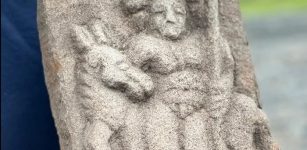 Carved Stone Depicting Mystery Horseman Unearthed At Roman Vindolanda, Hadrian’s Wall
Archaeology | Jul 1, 2021
Carved Stone Depicting Mystery Horseman Unearthed At Roman Vindolanda, Hadrian’s Wall
Archaeology | Jul 1, 2021 -
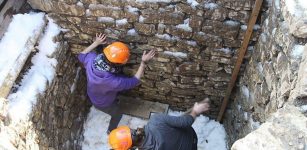 Did Ancient Romans Use Four-Meter Deep Shafts As Refrigerators During Summer?
Archaeology | Apr 6, 2018
Did Ancient Romans Use Four-Meter Deep Shafts As Refrigerators During Summer?
Archaeology | Apr 6, 2018 -
 Underground Civilizations – True Rulers Of Earth – Part 1
Ancient Mysteries | May 7, 2019
Underground Civilizations – True Rulers Of Earth – Part 1
Ancient Mysteries | May 7, 2019 -
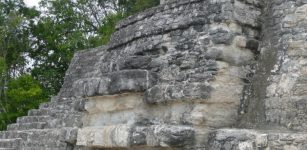 Ancient Maya Destroyed Their Environment 2,000 Years Ago – Effects Are Still Visible Today
Civilizations | Sep 9, 2015
Ancient Maya Destroyed Their Environment 2,000 Years Ago – Effects Are Still Visible Today
Civilizations | Sep 9, 2015 -
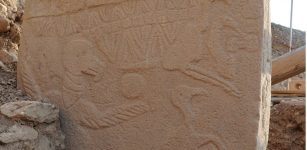 Evidence Of Neolithic Bird Hunting In Upper Mesopotamia
Archaeology | Sep 27, 2023
Evidence Of Neolithic Bird Hunting In Upper Mesopotamia
Archaeology | Sep 27, 2023 -
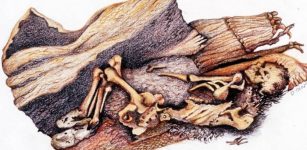 DNA Study Of Controversial Ancient North American Mummies, Including The Spirit Cave Mummy Opens An Extraordinary Chapter In Human History
Archaeology | Nov 15, 2018
DNA Study Of Controversial Ancient North American Mummies, Including The Spirit Cave Mummy Opens An Extraordinary Chapter In Human History
Archaeology | Nov 15, 2018 -
 Moon: What Was Its Role In Beliefs Of Ancient People?
Featured Stories | Apr 6, 2019
Moon: What Was Its Role In Beliefs Of Ancient People?
Featured Stories | Apr 6, 2019 -
 Why Was Europe’s Oldest Battle Fought At Tollense Valley 3,000 Years Ago?
Archaeology | Oct 25, 2024
Why Was Europe’s Oldest Battle Fought At Tollense Valley 3,000 Years Ago?
Archaeology | Oct 25, 2024 -
 Was Biblical Adam A Giant Who Emerged From An Underground World?
Ancient Mysteries | May 24, 2018
Was Biblical Adam A Giant Who Emerged From An Underground World?
Ancient Mysteries | May 24, 2018 -
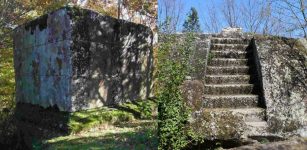 Mysterious Etruscan Stone Structures Hidden In The Malano Forest – Evidence Of Ancient Unknown High-Tech Knowledge?
Featured Stories | Dec 19, 2020
Mysterious Etruscan Stone Structures Hidden In The Malano Forest – Evidence Of Ancient Unknown High-Tech Knowledge?
Featured Stories | Dec 19, 2020 -
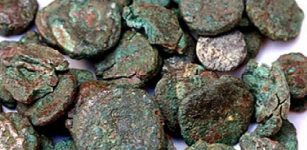 Thousands Of Ignored ‘Nummi Minimi’ Coins Found In Ancient Marea, Egypt With Hidden Fascinating History
Archaeology | Dec 10, 2023
Thousands Of Ignored ‘Nummi Minimi’ Coins Found In Ancient Marea, Egypt With Hidden Fascinating History
Archaeology | Dec 10, 2023 -
 Earliest Baltic Amber In Western Europe Found On The Iberian Peninsula 5,000 Years Ago
Archaeology | Oct 21, 2023
Earliest Baltic Amber In Western Europe Found On The Iberian Peninsula 5,000 Years Ago
Archaeology | Oct 21, 2023 -
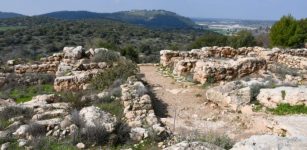 Story Of David And Goliath Linked To Horvat Qeiyafa In The Valley Of Elah, Israel
Archaeology | Feb 22, 2022
Story Of David And Goliath Linked To Horvat Qeiyafa In The Valley Of Elah, Israel
Archaeology | Feb 22, 2022 -
 First Peoples Of Japan: Ainu Civilization And Its Unknown Origin
Ancient Mysteries | Oct 18, 2014
First Peoples Of Japan: Ainu Civilization And Its Unknown Origin
Ancient Mysteries | Oct 18, 2014 -
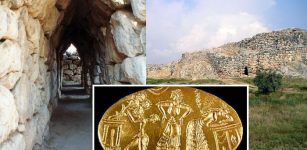 Ancient Mystery Of The Tomb Of Tiryns – Burial Place For An Unknown Mycenaean Hero?
Featured Stories | Jan 11, 2021
Ancient Mystery Of The Tomb Of Tiryns – Burial Place For An Unknown Mycenaean Hero?
Featured Stories | Jan 11, 2021 -
 Radar Reveals ‘Ghost’ Footprints From Pleistocene Era
Archaeology | Nov 13, 2019
Radar Reveals ‘Ghost’ Footprints From Pleistocene Era
Archaeology | Nov 13, 2019 -
 Did The Unique Gjermundbu Viking Helmet Belong To A Warrior Who Served Rulers In The East?
Archaeology | Feb 8, 2022
Did The Unique Gjermundbu Viking Helmet Belong To A Warrior Who Served Rulers In The East?
Archaeology | Feb 8, 2022 -
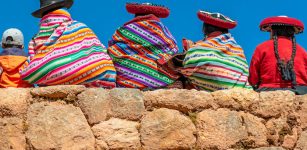 Ancient People In Peru Had A Unique Response To The Looting And Destruction Of Their Ancestors’ Graves
Archaeology | Feb 3, 2022
Ancient People In Peru Had A Unique Response To The Looting And Destruction Of Their Ancestors’ Graves
Archaeology | Feb 3, 2022 -
 Mystery Of The Royal Tombs At Vergina Deepens – Has Alexander The Great’s Sacred Purple Tunic Been Found Inside?
Archaeology | Oct 28, 2024
Mystery Of The Royal Tombs At Vergina Deepens – Has Alexander The Great’s Sacred Purple Tunic Been Found Inside?
Archaeology | Oct 28, 2024 -
 Ancient Mystery Of The American Southwest – Unusual Skeletons And Mummies – Part 2
Ancient Mysteries | Jul 24, 2018
Ancient Mystery Of The American Southwest – Unusual Skeletons And Mummies – Part 2
Ancient Mysteries | Jul 24, 2018


